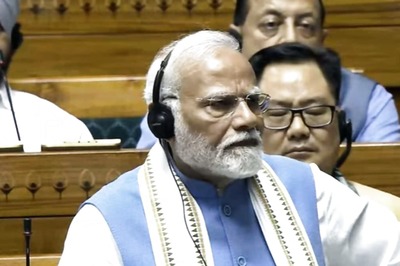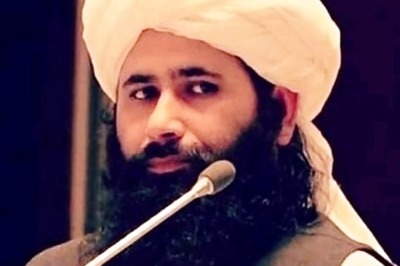
views
On July 15, the United Nations Assistance Mission in Afghanistan (UNAMA) released its mid-year update on civilian casualties in Afghanistan. From January 1 to June 30 2018, UNAMA recorded 5,122 civilian casualties - 1,692 deaths and 3,430 injured.
The first line of the report reads, “In the first six months of 2018, the armed conflict continued to destroy the lives and livelihoods of civilians at the same toxic levels as last year.”
In neighbouring Pakistan, on July 13, a blast ripped through an election rally in Balochistan, killing 130 people and wounding over 200. The responsibility for the attack was claimed by ISIS.
The South Asian region is heavily impacted by terror. According to the US State Department, Country Reports on Terrorism 2016, over 11,000 terrorist attacks took place in 104 countries in 2016. However, they were heavily concentrated geographically and fifty-five percent of all attacks took place in five countries, three of which lie in South Asia (Iraq, Afghanistan, India, Pakistan, and the Philippines).
Terrorism is not a new phenomenon. David Rapoport has defined four waves of modern terrorism. The first, called the Anarchist wave, emerged in Russia in 1870s. The Anti-Colonial wave started after the First World War and lasted till the 1960s, by which time most of the colonies had achieved independence. This was also the time when the terrorist/freedom fighter analogy came into prominence.
The third wave was the New Left wave whose heroes were people like Che Guevara and it spawned organisations like the PLO, German Red Army and Shining Path. The fourth wave, which finds its beginning in the Iranian revolution is called the Religious wave.
This has been the most enduring wave and the most destructive, and while it predates America’s Global War on Terror (GWOT), it has been heavily influenced by it. In many ways, the GWOT has actually helped sustain the current wave of terrorism and turn it more violent. From 2001 onwards, the situation has steadily deteriorated.
The worst sufferers are the civilians, and while there is still no clarity on the number of civilian deaths, directly or indirectly caused by the war on terror, the figures could be as high as one million. Over 10 million civilians have been displaced as a result of the fighting.
Why are we not winning this global war? The first reason is the lack of clear strategic objectives. America has taken the lead in the GWOT, but it has not had a consistent strategic vision. Focus on a strategy to defeat terrorism has swung from nation building to regime change to narrowly focusing on selected terror outfits that can harm national interests.
Just after 9/11, the 2002 National Security Strategy of President George Bush talked about disrupting and destroying terror organisations of global reach. These were seen as the biggest threat. Fast forward to Trump’s National Security Strategy. Talking about it, Defense Secretary Mattis said that competition between great powers, not terrorism, is now the main focus of America’s national security.
There has also been an inconsistency in allotting sufficient resources for this fight. In 2009, President Obama, standing in the Eisenhower Hall at West Point, announced a surge of 30,000 troops to Afghanistan. In the same speech he also said that after 18 months, our troops will begin to come home. It was thus clear to Taliban that they only had to wait things out.
Over a period of time, the moral framework for fighting terrorism has been diluted, and geopolitics and national interests have become the dominant factor. The US entry into Iraq in 2003 led to a complete destabilization of the Middle East and the creation of the ISIS.
The US -Russia competition in Syria has little to do with fighting terrorism but more to assert themselves in the region. In the process, they have directly and indirectly aided various terror groups. The Saudi Arabia intervention in Yemen is a manifestation of the larger Shia-Sunni conflict. Apart from the misery heaped upon the civilians, one consequence of this conflict has been the strengthening of the al-Qaeda in Yemen.
In this environment, can there be an international consensus for fighting global terror? The only organization that we can look towards is the United Nations (UN). But the UN has been badly bitten. The US and Britain invasion of Iraq in 2003 without Security Council approval led to a weakening of the UN as an international body.
In 2011, the UN approved a NATO-led mission in Libya to protect civilians. The resultant air attacks led to the unseating and death of Gaddafi but Libya slipped into complete chaos. Stung by the results of Libya, the UN refused to intervene in Syria. And Syria today is the most tragic story with the Human Rights Watch reporting over 400,000 deaths.
The UN has also declined to undertake any counterterrorist operations. The 2015 High Level Independent Panel Report on Peace Operations and a 2018 report of the Special Committee on Peace Operations have both asserted that UN peacekeeping operations shall not engage in counterterrorist operations.
What is the way to combat this menace? In my view, the answer lies in “thinking globally but fighting locally”. There is obviously a need for global cooperation. Globalisation and advances in technology have had a major impact in shaping the current wave of terrorism. Information technology has enhanced the reach of terror organisations, enabling them to plan global operations and carry out worldwide recruitment. Globalisation permits information, terrorists and finances to easily travel across borders.
We, therefore, need global cooperation in areas of technology sharing for strengthening mechanisms for checking terrorist movements, the choking of terror funds, intelligence sharing, security of nuclear technology etc. But the fighting has to be done by local forces.
Induction of foreign soldiers in an alien culture is highly problematic. Seen as outsiders, they lack local knowledge and cultural sensitivity, exacerbating an already fragile situation. When the American troops entered Afghanistan in 2001, they were largely welcomed by the locals weary of the harsh Taliban rule. However, the alignment with corrupt warlords, due to an inadequate understanding of local dynamics, and indiscriminate use of force, led to large sections of the population turning against the Americans.
A global war, led by international forces, is also narrowly focused on killing terrorists and not killing terrorism. The latter requires a deep look at the root causes of why terrorism finds space in different societies. These causes could be social, economic, ethnic or psychological, and there cannot be a one-size-fits-all solution.
Answers have to be found at the local level and addressed through local governments. Global powers can help by pressurising local governments to address the root causes, not by putting boots on the ground.
The battle of the narratives is a key tool in fighting terrorism. However, a global narrative can be too simplistic and even misleading. Today, an impression has been created that there is a contest between Islam and the rest of the world.
This has resulted in radicalisation even among the most peaceful of societies. Again, the key to winning is in crafting narratives locally rather than globally. Even within Jammu and Kashmir, there cannot be a common narrative, it has to be different for Jammu and different for Kashmir.
The Global War on Terror was launched in the aftermath of 9/11. It is time to put this phrase to rest. There is certainly a need to strengthen global cooperation to fight terrorism, but the boots on the ground and the strategy must be local.
(The author is former Northern Commander, Indian Army, under whose leadership India carried out surgical strikes against Pakistan in 2016. Views are personal.)




















Comments
0 comment